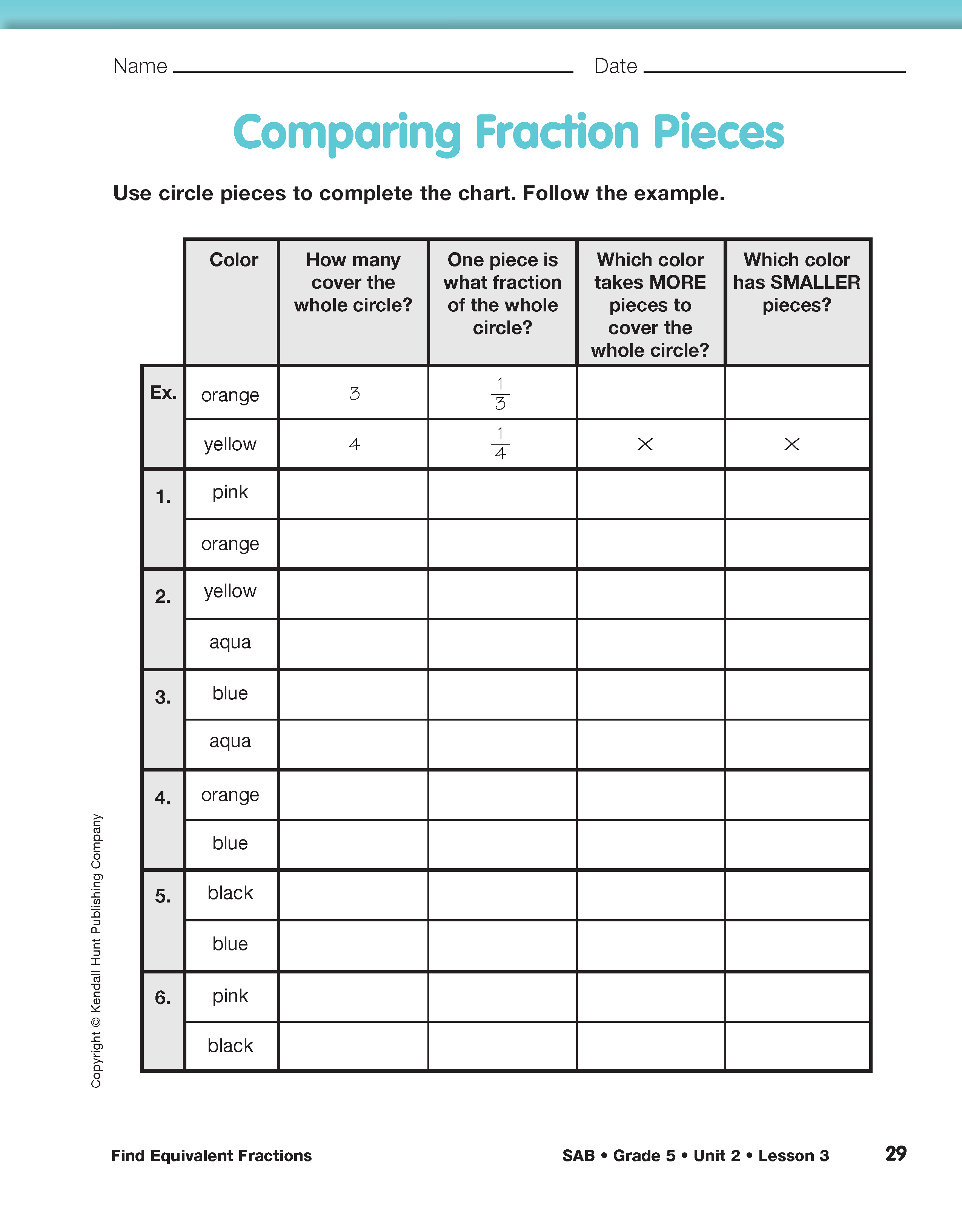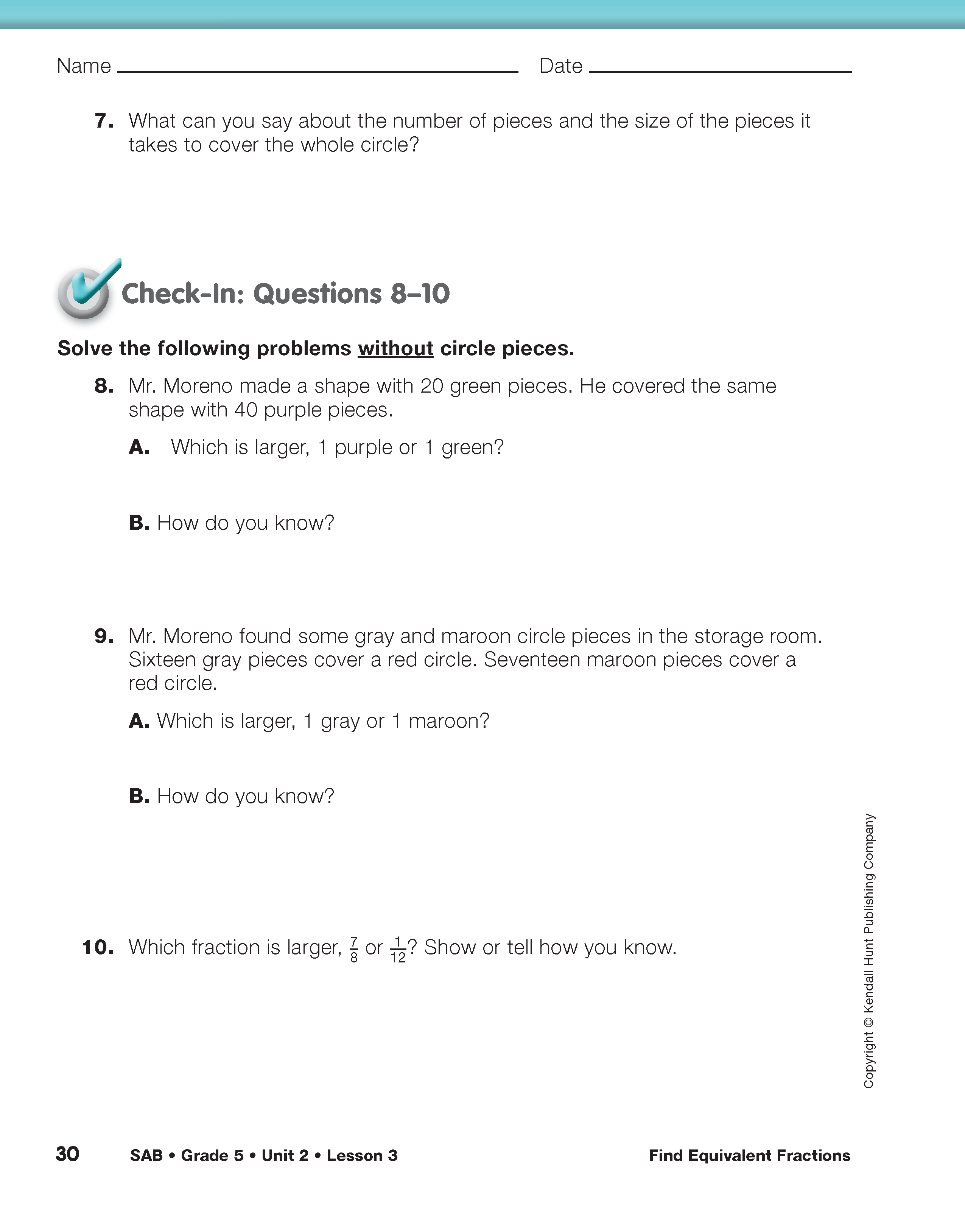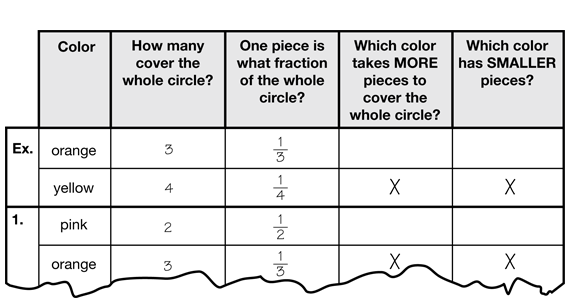Students will use the red, pink, orange, yellow, aqua, blue, and black pieces for this part of the lesson. Ask students to turn to the first Comparing Fraction Pieces page in the Student Activity Book.
Model using the circle pieces to complete the example, and ask:
- How many orange pieces cover the red circle? (3)
- One orange piece covers what fraction of the whole circle? (1/3)
- How many yellow pieces cover the circle? (4)
- One yellow covers what fraction of the whole circle? (1/4)
- Which color takes more pieces to cover the whole circle? (yellow)
- Which color pieces are smaller? (yellow)
- Which is smaller, 1/3 of the circle or 1/4 of the circle? (1/4)
Figure 6 shows the completed example. After reviewing the example, ask students to use their circle pieces to complete Questions 1–7.
Upon completion, ask students if they see any patterns between the number of pieces it takes to cover the unit whole and the size of the pieces. Record class observations on a display or chart paper.
Use these observations to write a statement similar to one of the following:
- As the number of pieces needed to cover the unit whole decreases, the size of each piece gets larger.
- As the number of pieces needed to cover the unit whole increases, the size of the pieces gets smaller.
This language of more than and less than can lead to misunderstandings. Some students may say that 1/8 is greater than 1/4 because 8 is greater than 4 or because with eighths you have more pieces than you do with fourths. This type of whole number reasoning has a strong influence on how students think about fractions. Students need experiences that develop reasoning that can be applied to fractions in which students learn to consider the numerator and denominator together when they compare fractions.
Assign Check-In: Questions 8–10 on the Comparing Fraction Pieces pages in the Student Activity Book.
Use Check-In: Questions 8–10 on the Comparing Fraction Pieces pages in theStudent Activity Book to assess students' abilities to compare fractions using area models [E6].
















